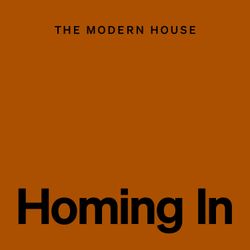Latest episode
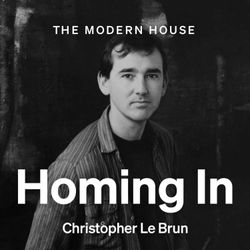
Sir Christopher Le Brun: The leading painter on the homes that have shaped him
01:19:51|Christopher was President of the Royal Academy for eight years and given a knighthood in 2021. I first met him a few years ago, when The Modern House was selling his beautiful home in Camberwell. Shortly after that, he had a joint exhibition in Los Angeles with my wife, Faye Toogood, so I got to know him better during the week we were out there together. This podcast gave me the chance to go a bit deeper, and I really enjoyed finding out more about his life. Despite always finding himself in positions of authority, Christopher paints a picture of a naturally shy and introspective character. He and his wife, Charlotte Verity, moved out to Somerset a couple of years ago, and we had a snoop around their studios before sitting down to record this podcast in their lovely Georgian farmhouse. Christopher gives me a fascinating insight into what it's like to be a professional painter: from the importance of the space he's working in, to the rituals he goes through and what he's thinking about. He tells me about what it's like to live with another artist – how they need to give each other space, and how they critique each other's work. And we discuss the important houses in his life, notably the Victorian villa that he extended with the help of the architect Jamie Fobert. I've got a huge amount of respect for Christopher, and I found this conversation so fascinating. I hope you enjoy it too.For more:Subscribe to The Modern House newsletter for weekly interiors inspirationPick up a copy of Matt Gibberd’s latest book, A Modern Way To LiveFollow Matt Gibberd on InstagramFollow The Modern House InstagramWatch our Homing In films on YouTubeProducer: Laconic CollectiveGraphic Design: Ben TuckerMusic: Simeon Walker
More episodes
View all episodes

Dame Zandra Rhodes: the fashion legend on living a life in Technicolor
52:16|Zandra's home is one of the most colourful, cluttered and downright bonkers living spaces I've ever been in. We recorded this podcast just before Christmas, so there was an extra layer of sparkle on top of the kaleidoscope. Zandra walked me through her incredible life story... from being born during an air raid in 1940, to being discovered by American Vogue's fashion editor Diana Vreeland... dressing people like Freddie Mercury, and having lunch with Salvador Dali and Andy Warhol. We discussed why she dyes her hair pink and wears flamboyant clothes, and why she's never seen herself in the mirror without makeup on. She told me about her colourful family history, including a dad she was embarrassed by, a mum who channelled all of her ambition into Zandra, and a grandmother who was murdered. Zandra's in her mid-eighties now. A few years ago, she was diagnosed with cancer and given six months to live, so I wasn't sure quite what to expect. But I found someone who's incredibly full of life, working as hard as ever, and optimistic about the future. This episode was recorded in person at Zandra's home in London.For more:Pick up a copy of Zandra Rhodes' latest book, IconicSubscribe to The Modern House newsletter for weekly interiors inspirationPick up a copy of Matt Gibberd’s latest book, A Modern Way To LiveFollow Matt Gibberd on InstagramFollow The Modern House InstagramWatch our Homing In films on YouTubeProducer: Laconic CollectiveGraphic Design: Ben TuckerMusic: Simeon WalkerThis episode is sponsored by Vitsoe.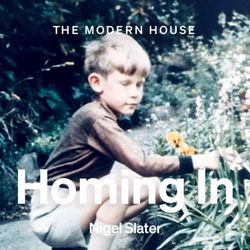
Nigel Slater: the food writer opens the door to his fascinating home life
01:32:26|Nigel is the first podcast guest ever to make me cry. I'm a big fan of his writing, and suspected he'd be a kindred spirit, but spending the day with him in his house was an overwhelming experience I wasn't prepared for.He lives around the corner from where I grew up, in a pared-back way that feels very familiar. In this remarkably honest conversation, he outlines the essential role his home plays in keeping him on an even keel. We discuss what it's like to suffer from panic attacks, and how they're triggered by the built environment. He tells me that whenever he arrives in a building he hasn't been to before, the first thing he does is check where the exit is so that he can plan his escape. We touch on the childhood trauma that he wrote about in his brilliant memoir, Toast, from his mother's death to his father's bullying. We discuss the roots of his lifelong interest in gardening, why he keeps a daily diary, and the importance of smell within the home. This is a conversation I'll remember forever. Thank you, Nigel. This episode was recorded in person at Nigel's home in London.For more:Pick up a copy of Nigel Slater's latest book, A Thousand Feasts: Small Moments of Joy … a Memoir of SortsFind out more about Nigel's collaboration with Perfumer HSubscribe to The Modern House newsletter for weekly interiors inspirationPick up a copy of Matt Gibberd’s latest book, A Modern Way To LiveFollow Matt Gibberd on InstagramFollow The Modern House InstagramWatch our Homing In films on YouTubeProducer: Laconic CollectiveGraphic Design: Ben TuckerMusic: Simeon WalkerThis episode is sponsored by Vitsoe.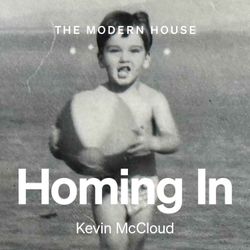
Kevin McCloud: the Grand Designs presenter takes us behind the scenes of his own life
50:51|Kevin has been a fixture on our tellies for so many years that we feel like we know him. But, actually, I didn’t have a clue about his life story, so this conversation was really interesting for me. He tells me about growing up in what he refers to as an ‘architectural zoo’ of housing from different eras. We talk about his involvement with Footlights, the famous comedy troupe at Cambridge University, where he collaborated with Stephen Fry, Hugh Laurie and Emma Thompson. And he explains why he’s spent years living in a camper van and why his future home will definitely have a view of the mountains. Kevin is one of the most engaging and fiercely intelligent guests I’ve spoken to on Homing In and he’s full of amusing anecdotes and top tips. I hope you enjoy the episode!This episode was recorded in person at St Anne's Court, a home currently for sale on The Modern House.For more: Watch Grand DesignsSubscribe to The Modern House newsletter for weekly interiors inspirationFind out more about Matt Gibberd’s latest book, A Modern Way To LiveFollow Matt Gibberd on InstagramFollow The Modern House InstagramWatch our Homing In films on YouTubeProducer: Hannah PhillipsEditing and mixing: Oscar CrawfordGraphic Design: Tom YoungMusic: FatherThis episode is sponsored by Vitsoe.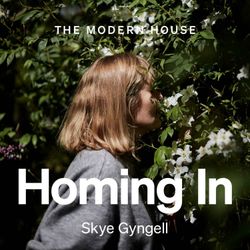
Skye Gyngell: a searingly honest portrait of a chef battling for her identity
50:56|Skye Gyngell was born and raised in Sydney, but has never felt Australian. In this honest and heartfelt interview, she paints a picture of a deeply introverted child who wanted to “turn down the volume” on everybody. Her father, Bruce Gyngell, was the first person to appear on TV in Australia, and uttered the immortal line, “Good evening, and welcome to television.” She describes him as very flamboyant (“probably a real show-off, actually”), and he would send a chauffeur-driven car to pick her up from school. Sydney in the Seventies was a tight-knit community where everyone knew each other’s business, and, as a sensitive personality, she found the attention impossible to deal with. As soon as she turned 18, she fled to Europe, and has never looked back. We explore her life story through the lens of the homes she’s lived in… from the house on stilts that was built by her parents, to her beautiful home in west London where we recorded this episode.For more: Head over to our website for more images of the places discussedVisit Spring and Heckfield PlaceSign up to The Modern House newsletter for weekly interiors inspiration Check out Matt Gibberd’s latest book, A Modern Way To Live Follow Matt Gibberd on InstagramFollow The Modern House InstagramWatch our Homing In films on YouTubeExecutive Producer: Kate Taylor of Feast CollectiveProduction: Hannah PhillipsMusic: FatherGraphic Design: Tom Young
Ruth Rogers: London’s favourite chef on creating an iconic house
45:25|For Ruth Rogers, home is at the very heart of everything. Her legendary London restaurant, the River Cafe, is founded on community, friendship and home cooking. Her iconic house in Chelsea, which she co-created with her architect husband, Richard Rogers, has been the backdrop to family life for forty years and has influenced a generation of homeowners to live with light and space. Ruthie invited me in to discuss her extraordinary life through the lens of the homes she has lived in. She describes with great poignancy how her house provides her with comfort following Richard’s death. She talks about growing up in the Borscht Belt near New York, and a chance encounter with Bob Dylan in Woodstock. Having personally co-founded a business in an industry I knew nothing about, I can relate to Ruthie’s inspiring story of starting the River Cafe with no restaurant experience and making things up as she went along. She tells me about how the restaurant has become a home from home, and why it’s been a breeding ground for some of the world’s most celebrated chefs, including Jamie Oliver, Hugh Fearnley-Whittingstall, April Bloomfield and Allegra McEvedy. She talks about the influences behind her Chelsea home, from the Maison de Verre in Paris to the Italian piazzas of Pienza and Montepulciano, and why a rather special set of coloured pencils is one of the first things she would save in a house fire. This conversation was recorded in person at Ruth Rogers’ home in Chelsea, London. For more on Ruth Rogers:Watch our film at the home of Ruth and Richard Rogers Visit the River Café Listen to Ruth’s podcast, Ruthie’s Table Four For more from Matt Gibberd and The Modern House:Sign up to our newsletter for weekly interior inspirationFollow us on InstagramCheck out Matt's latest book, A Modern Way To LiveFollow Matt Gibberd on InstagramWatch our Homing In films on YouTubeExecutive Producer: Kate Taylor of Feast CollectiveProduction: Hannah PhillipsMusic: FatherGraphic Design: Tom Young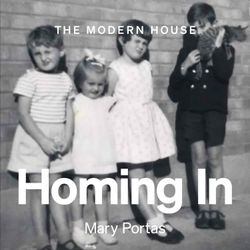
Mary Portas: the queen of the high street’s inspiring journey from homeless orphan to a London townhouse that’s all hers
52:54|Most of us know Mary Portas as a swashbuckling TV presenter with a flame-red bob, but her career away from the screen has been no less remarkable. She did the window displays for Topshop during its heyday and was the creative director of Harvey Nichols when it was immortalised on Absolutely Fabulous. Nowadays, however, she runs her consultancy, Portas, which helps brands create purpose and beauty in everything they do. As this episode reveals, her life story is incredibly rich and filled with both trauma and triumph. This episode was recorded in person at the Portas offices, London.For more: Head over to our website for more images of the places discussedVisit Portas Sign up to The Modern House newsletter for weekly interiors inspiration Check out Matt Gibberd’s latest book, A Modern Way To Live Follow Matt Gibberd on InstagramFollow The Modern House InstagramWatch our Homing In films on YouTubeThis episode is sponsored by Vitsoe.Executive Producer: Kate Taylor of Feast CollectiveProducer: Hannah PhillipsMusic: FatherGraphic Design: Tom Young
